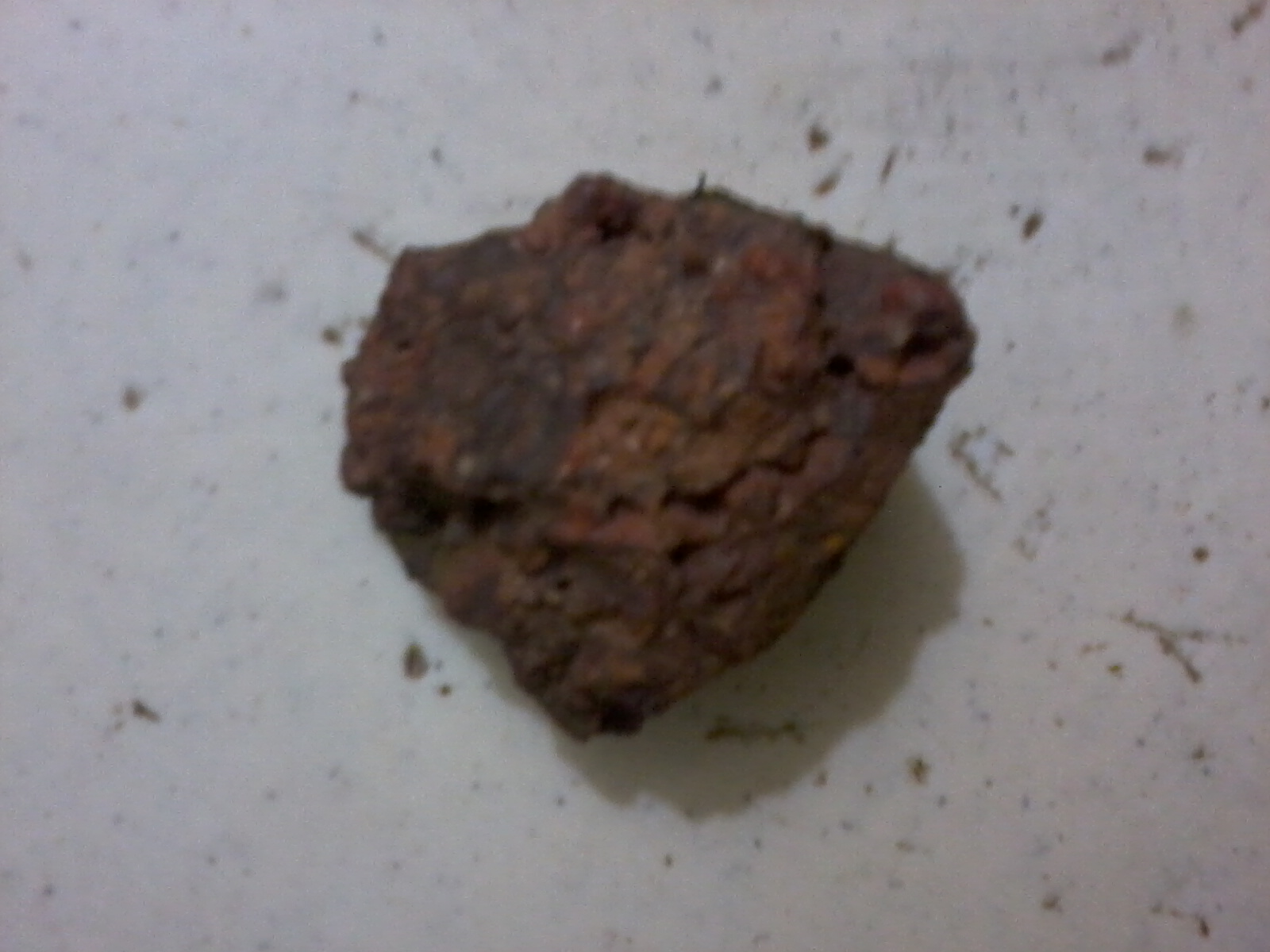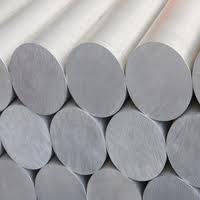


| Symbol: | Al |
| Melting point: | 660.3'C |
| Electron configuration: | [Ne]3s23p1 |
| Atomic number: | 13 |
| Atomic mass: | 26.981539±0.00001u |



| Ore | Common Name | Formula |
|---|---|---|
| Bauxite | Bauxite | Al2O3,2H2O |
| Kaolin | China Clay | Al2Si2O5(OH)4 |
| Feldspar | Feldspar | KAlSi3O8,NaAlSi3O8,CaAl2Si2O8 |
| Corundum | Corundum | Al2O3 |
| Diaspore | Diaspore | AlO(OH) |
| Boehmite | Boehmite | AlO(OH) |
| Gibbsite | Gibbsite | Al(OH)3 |
Aluminium is an abundant metal present in the earth crust. It came into a large scale use towards the end of the 19th century. It was extracted in the pure form by the year 1827 AD. Aluminium is not found in a free state. It is one of the important constituent of silicate minerals and clay minerals. The major industrial source of aluminium is bauxite. Bauxite is hydrated oxide of aluminium. Other minerals used for extraction of aluminium are Kaolin, Feldspar, Porter's Earth, Fuller's Earth, Garnet, Corondum, Diaspore, Boehmite, Gibsite and Websterite. Bauxite is usually found on the lateritic rock near the surface of the earth. It is formed due to removal of potassium, magnesium & calcium in the water solution. The weathered rocks are the main source of bauxite. The rocks like granite (igneous rock) and granite gneiss (metamorphic rock) are the source of aluminium which converts into aluminium hydroxide. After weathering of potassium, magnesium and calcium, the aluminium oxide and iron oxide remains as the residue. When aluminium oxide comes in contact with water aluminium hydroxide is formed. The process of leaching from the bed rock is the main cause of formation of bauxite deposits. The mineral bauxite was first found near the village LesBaux of southern France. So, the name was kept as Bauxite. It was discovered in 1821 AD.
The aluminium is a bluish silvery white shining and durable metal. It is a good conductor of heat and electricity. It is malleable and ductile. It is soft in the pure state. It can be hardened by alloying with other elements like zinc, copper, magnesium, silicon, titanium and manganese. Aluminium is capable of taking high polish. It has a low specific gravity (2.58). Aluminium metal is used largely for manufacture of household articles, wrapping foil, cane, building sheet and electrical equipment. The alloys of aluminium are used in auto mobiles, air-crafts, space technology and chemical industries. Aluminium was first isolated by Wohler in 1827. It was put into major use due to its high cost of production in the beginning. With the development of electrolytic methods for the extraction of aluminium from the fused alumina, it became an important metal for common use. Because of its lightness, good conductivity, resistance to corrosion, malleability and ductile nature, it has wide applications in the industrial use. Some of the aluminium alloys like duralium, magnalium and alnico are developed for specific industrial uses. Aluminium has also important compounds like aluminium chloride and alum which are used in industrial works. Aluminium chloride is used as reagent in the manufacture of dyes, paints and perfumes. It is also used to refine crude petroleum oil. Alum is used for water purification.
Aluminium has great affinity for oxygen. Its corrosion resistance is relatively high. This is due to the dense impervious film of oxide that forms on the surface of the metal and protects it from further oxidation. The corrosion resistance can be further improved by anodizing treatment of aluminium. Such treatment can thicken the natural oxide film. Since aluminium oxide is very hard, its corrosion resistance is increased by the oxide layer. The high affinity of aluminium for oxygen makes it useful as de oxidant in the iron and steel industry. It is also used in the Thermit process of welding. The high conductivity property made aluminium the main wire producing metal. Aluminium wires are used in large scale for electrical wiring. It is now widely used as a wire twisted around the steel wire for longevity and strength. Aluminium wire is coated with copper to increase the conductivity. Pure aluminium is available up to 90%. Aluminium is suitable for both cold and hot working.
The high affinity of aluminium for oxygen made the extraction process difficult and costly. Usually a metal is extracted by heating its oxide ore with cheaper reducing agent like coal. The resulting metallic mass is refined by oxidizing the impurities present in it. But due to the chemical affinity of aluminium for oxygen, the reduction process is not possible for extraction of aluminium. Ultimately, it was found that through electrolytic process, aluminium can be extracted from its ore bauxite. Bauxite is the main ore for aluminium extraction. It has wide color range from creamy white to reddish brown. The aluminium content may vary from 50%-60%.The bauxite also contains up to 25% of red ferric oxide & up to 4% of silica. Bauxite is a mixture of aluminium hydroxide, ferric oxide, potassium silicate and aluminium silicate. The main producers of bauxite minerals are Australia, India, Brazil, China, U.S.A, Russia, France, Norway, Guinea, Surinam, Greece and Hungary. The bauxite minerals are crushed and the silicates and ferric oxides are separated through washing. Ferric oxides are converted into red mud and separated through filtration. The aluminium hydroxide powder is separated from the silicates.
Then, it is heated and fused to form alumina. The above process is used when the bauxite is free from major impurities. If the impurities like ferric oxide and silicate are present as contact minerals, then only aluminium hydroxide can be separated from there. But in nature, bauxite ore with sufficient purity is not available. It usually has iron oxide and silica as impurity. Some processes for cleaning of aluminium hydroxide from the impurities are developed and practised. These are known as Bayer's process, Hall's process and Serpeck's process.
Bayer's process: This process is also known as alkaline process. Bayer's process is applied for purification of bauxite when the main impurity is iron oxide. The bauxite ore is crushed and finely ground.It is roasted to convert ferrous oxide to ferric oxide. The roasted ore is digested with sodium hydroxide solution at 150'C. When alumina is dissolved in the solution, the impurities such as iron oxide and titanium oxide are left behind. The filtrate is treated with freshly prepared aluminium hydroxide. Some lime is added to the solution, so that, precipitation of aluminium hydroxide takes place. The precipitate is separated and heated to produce alumina.
Hall's process: In this process, the bauxite ore is crushed and washed properly. The powder ore is fused with sodium carbonate. Water is added and heated for some period. Soluble sodium meta aluminate is separated. Iron oxide and other impurities remain as residues. The water extract of sodium aluminate is heated and carbon dioxide is passed through it. There is precipitation of aluminium hydroxide that is filtered and dried. Then it is heated to produce alumina.
Serpeck's process: This process is employed for the ore containing silica as the main impurity. The ore is crushed and cleaned properly. The powder mineral is heated with carbon at about 1000'C in the presence of nitrogen gas. Silica gets reduced to silicon. On hydrolysis, aluminium hydroxide is produced. The precipitation takes place slowly and is dried properly. The dry precipitate is heated to get alumina.
Some other processes are also developed for use in specific cases. Two processes like Acid process and Electrothermic process found application in purification of bauxite ore.
Acid process: Here treatment of bauxite mineral powders is carried with dilute sulphuric acid or hydrochloric acid. So the impurities are converted into salt of aluminium. The liquid is calcined to produce precipitate of aluminum hydroxide. The precipitate is dried and heated to produce alumina.
Electrothermic process: The alumina is extracted by reduction of impurities. Mixture of bauxite ore with carbon is heated in an electric arc furnace. Due to heating carbon reduces the impurities and alumina is set free.
